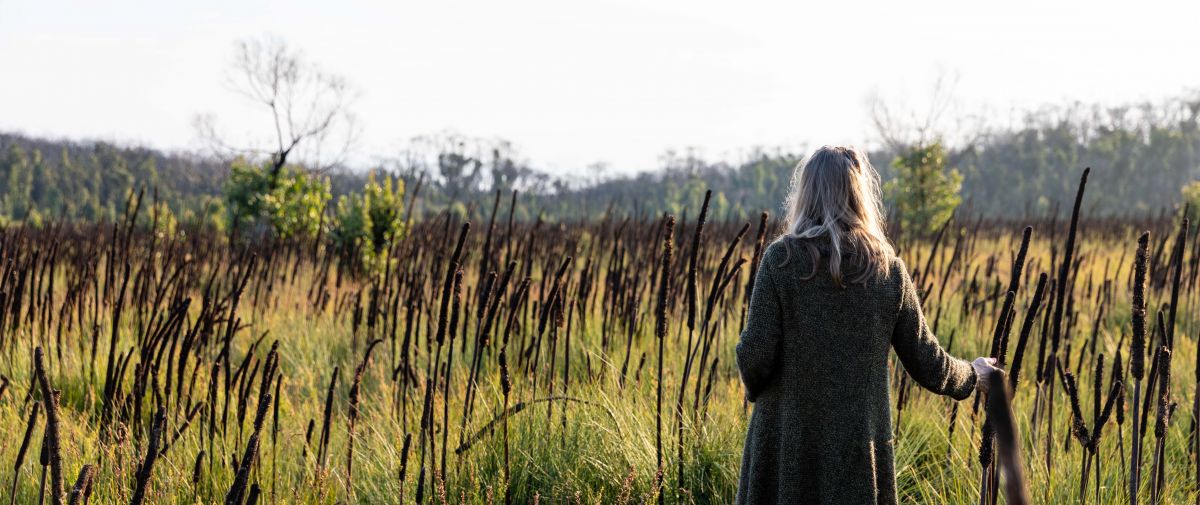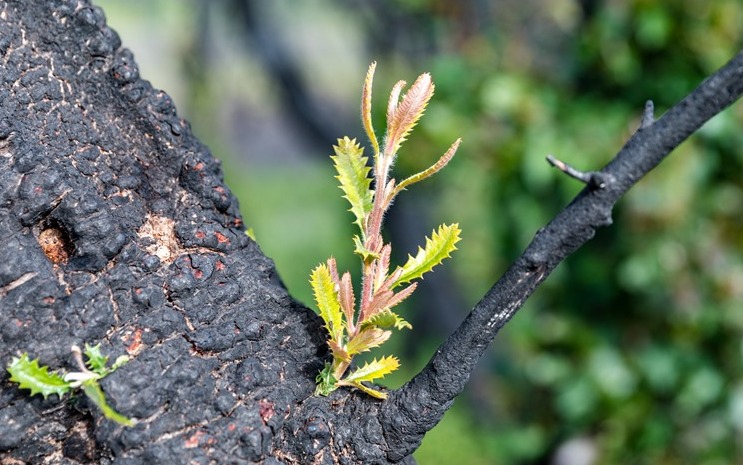In short
|

What is Nature-led Community Resilience?
Nature-led Community Resilience (NLCR) is an approach to emergency management that benefits both people and nature through disasters. NCLR is founded on the reciprocal relationship between people and nature. When people connect with and support nature’s recovery, they are supported in their own recovery with renewed hope for the future.
NLCR involves people healing nature and nature healing people.
What is this toolkit for?
This toolkit aims to inspire and guide communities and organisations to include NLCR practices in both disaster recovery and planning for future disasters. By drawing on case studies of where NLCR has been done well, we hope the toolkit provides tangible steps anyone can begin with. We want people to know what to do, when to do it, how to do it, how to access resources, and how to build effective ongoing partnerships across different stakeholder groups.
Benefits of NLCR
The role of nature in healing is supported by evidence, with emergency management increasingly appreciating its value. Insights from Australia and around the world highlight the critical role of nature in supporting personal and social recovery after disasters.
Recovery after Victoria’s recent bushfires, storms, and floods have shown real examples of the impacts of NLCR activities through connecting with nature.
NLCR benefits emergency management planning as it:
- Complements existing recovery actions: Supports all 5 recovery pillars (social, environmental, cultural, economic and built), is scalable, and adaptable for ‘all-hazards & all-communities’.
- Evidence-based & best practice informed: Based on recognised principles, state/national frameworks, needs assessments, research, Knowledges and practice.
- Co-designed & empowers communities: Community-led, builds individual capacity, trust and connections within communities.
- Supports lasting change: helps shift people’s mindset and behaviour through nature connection, supports adaptation and recognises First Nations leadership.
- A trauma-informed approach: supports the 5 elements of psychological safety; safety, calm, connection, agency and hope.
How do I get started?
The NLCR Toolkit and NLCR Story Library are a great place to start and can be used in any way that is helpful. You can read them from cover-to-cover, dipping into specific sections, reflecting on some of the core ideas, testing ideas in your work with communities and partners.
These resources can help you start including NLCR now:
- NCLR Toolkit– guidance and tools to identify, design and implement NCLR projects to support preparedness and recovery activities (accessible version (DOCX, 4.7 MB)).
- NCLR Story Library – brief stories of NCLR initiatives across different contexts, communities, activities, and outcomes (accessible version (DOCX, 6.5 MB)).
- NCLR Flyer – brief overview of NCLR and its benefits in emergency management.
These documents were developed with the funding support of the Victorian Government's Biodiversity Flood Recovery program.

How to include NCLR
NCLR actions can be considered in all phases of disasters; before, during, after and 'the new before' (the phase before the next disaster).
This flowchart outlines a process of including NLCR at various phases of disasters. Every community is different, so it's up to you to identify what's the most relevant opportunities for your community.
Opportunities to incorporate NLCR can be categorised broadly as:
- Guiding decisions and actions: By identifying and including NLCR in plans for community and environment recovery, and associated capability and capacity
- Bringing communities along: Through NLCR informed communication and engagement with stakeholders and communities
- Advocacy and funding: Through advocacy, grants and financing for NLCR activities and personnel
- Taking action: By assessing opportunities for NLCR, and partnering, and implementing NLCR activities as and when they are appropriate, and
- Learning: Through monitoring and evaluation for NLCR activities and sharing learnings across sector
For more information about implementing NLCR, see the NLCR Toolkit: Section 4 -Incorporating NLCR during the different phases of disasters, and Section 5A: Templates to support your NLCR activities.
NCLR in action
Co-written with Nina O'Brien and Brooke Williams, Foundation for Rural and Regional Renewal (FRRR), and Matt Humphrey, Berri Barmera Landcare
The Environmental Connection, run by Berri Barmera Landcare, was a series of 6 community events aiming to connect people affected by flooding to the positive environmental benefits of natural high-water events. Attracting 118 attendees, the events included activities spanning plant ID, propagation and maintenance, supporting birdlife and beneficial insects/pollinators, discovery walk and talk, and tree planting.
Matt Humphrey, Chairperson of Berri Barmera Landcare, believes that maintaining connection with nature before, during, and after disasters is critical. "It's that sense of wonder and awe...but it also gives people a sense of empowerment that they can do something."
Insights to support others in NLCR:
- Simple, low cost and locally driven initiatives that build on existing networks and trust, and involves diverse people in the community
- Build meaningful, enjoyable, awe-inspiring educational experiences linked with action
- Reduce community barriers to entry
- "Have lots of projects in the back pocket and understand the messages that resonate"
- Resource, small, locally based, not-for-profit organisations
- Ensure regular communications during response and recovery, supported by pre-existing trusted relationships
For more information about this story, see the NLCR Story Library.
Co-written with Sharlee Dunolly-Lee & Simon Coverdale, DJANDAK, a Dja Dja Wurrung Enterprise
Like many, Djaara (Dja Dja Wurrung People) are witnessing the disruptive impacts of floods. We see the harm to people and communities, landscapes, rivers and animal populations including the smallest creatures: the dragonflies, yabbies, lichens and fungi. More extreme weather makes it difficult to practice culture and heal country; when cultural landscapes are eroded by floods, Djaara knowledge and wellbeing is harmed. Djaara apply the principles of sitting with, listening to and healing Djaara, Djandak (Dja Dja Wurrung Country) and our climate.
Yaram Yaram Manya (the Bendigo Creek) is an important cultural place for Djaara and was once a chain of billabongs, a long way from the lineal urbanised creek we know today. Part of healing has meant Djaara leading restoring a chain of connect freshwater frog ponds.
DJANDAK (a Dja Dja Wurrung Enterprise) collaborated with the North Central CMA and other stakeholders to implement the frog pond works during the Wanyarra Dhelk (Good Waterhole) Reimagining Bendigo Creek Project in 2020. This project included lots of engagement with Djaara community members to ensure it met their needs in connecting with Country, and information to inform communities about its significance.
Wanyarra Dum is now a place of peace and rejuvenation. It provides opportunities for people and nature to come together, enabling the meaningful bond between them. Places like Wanyarra Dum can support regular recreation and enjoyment, and personal and community resilience including from disasters.
For more information about this story, see the NLCR Story Library.
Additional resources in the NLCR Toolkit
In the appendices you will find helpful resources to guide your NCLR journey. These include:
- Templates to support your NLCR activities
- Example activities across different phases of disasters
- Overview of NLCR research and evaluation
- How NLCR connects with emergency management frameworks
- Resource hub
For more information, you can contact research.ari@deeca.vic.gov.au
Page last updated: 10/02/25